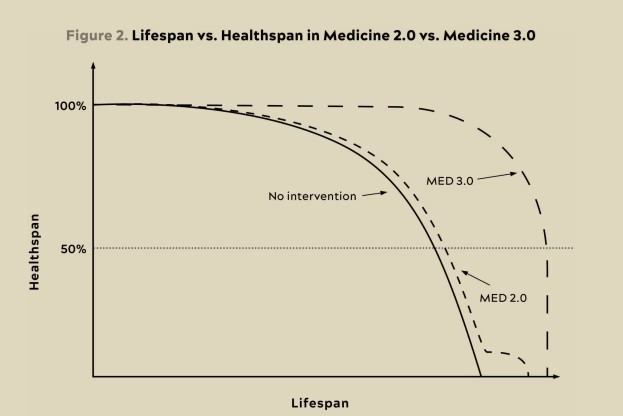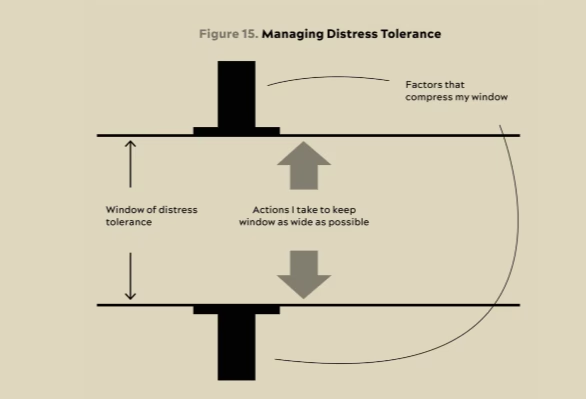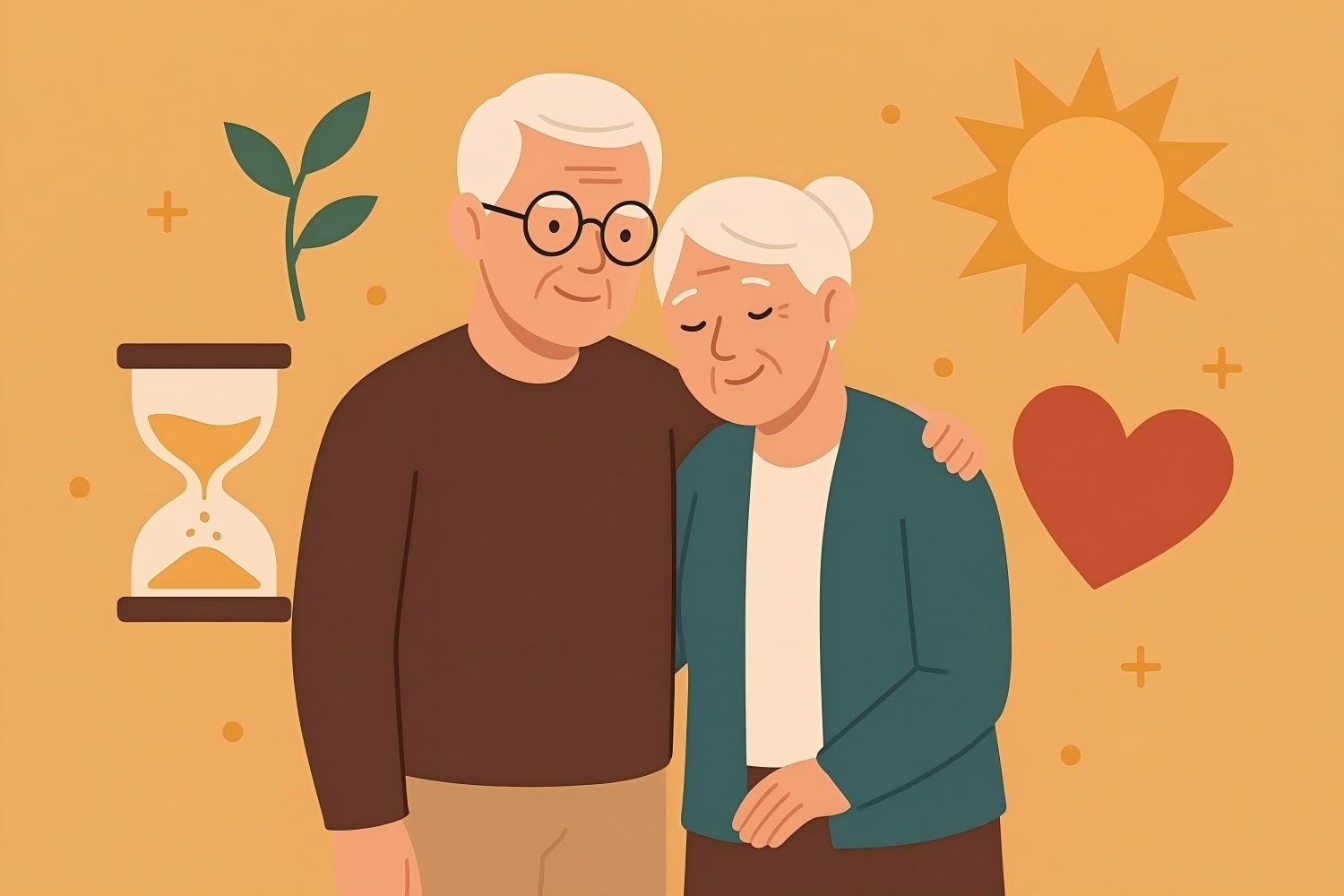Our goal isn’t just to live a long life — it’s to live a long, healthy one. A life extended by illness doesn’t bring true happiness.

Heart disease, cancer, neurodegenerative disorders, and type 2 diabetes are the four leading diseases that affect lifespan. Instead of waiting until these conditions strike and relying solely on medication, we should focus on prevention to help extend our healthy years.
Strategies for extending a healthy lifespan focus on preventing declines in cognitive, physical, or emotional health. These three elements determine our ability to live happily and with dignity.
Five key strategies for extending healthspan include exercise, nutrition, sleep, emotional well-being, and exogenous molecules—such as medications, hormones, or supplements.
1. exercise
Exercise is the number one secret to a long life.
Exercise helps reduce body fat, prevent arterial hardening, and lower the risk of cancer and diabetes. It also significantly decreases the risk of Alzheimer’s disease.
Physical activity improves overall fitness, including balance and strength. Good balance is a key factor in preventing falls.
Exercise increases your VO₂ max, which is the maximum rate at which your body can use oxygen. This is one of the strongest predictors of mortality—people with higher VO₂ max levels tend to have lower death rates.
Exercise also boosts social connections, which helps keep the brain sharp and engaged.
Warning! Ongoing muscle loss can be life-threatening.
The biggest cause is a lack of physical activity. When muscle mass and strength decline to the point where normal movement becomes difficult, the body enters a downward spiral—ultimately ending healthy life after a single fall.
Myth: Walking is always considered exercise.
Reality: Not all walking counts as effective exercise. Real exercise means activities that increase or maintain lung capacity, VO₂ max, muscle strength, and balance. In other words, your heart rate and muscles need to work beyond their usual comfort zone.
Leisurely walks or playing golf don’t meet that standard. A 3-minute run can be more effective than a 2-hour casual stroll. Remember: if your heart’s not pumping and your face isn’t flushing—it’s not real exercise!
How do you know if your workout is intense enough?
One reliable way is to monitor your heart rate during exercise. Your target heart rate zone should be 70% to 85% of your maximum heart rate.
At this level, your body can perform at near-maximum effort without building up excess lactic acid, allowing you to sustain the activity longer and more effectively. This is the sweet spot for improving cardiovascular fitness and endurance.
Running tends to deliver better training results than swimming or cycling. If running isn’t a good fit for you, try brisk walking instead—but make sure to keep up a strong pace. For best results, add some weight, ideally around 10% to 20% of your body weight.
2. nutrition
Shop on the outer edges
When you shop at the grocery store, stick to the outer edges for healthier options—that’s where you’ll find fresh produce, meat, seafood, dairy (like milk and yogurt), eggs, and prepared foods.
Try to avoid the center aisles as much as possible, since that’s where most of the processed foods are—chips, candy, instant noodles, sugary drinks, cookies, frozen meals, and other packaged items high in calories, sugar, and sodium.
No alcohol
Every ounce of alcohol adds strain to your liver, so try to steer clear of it whenever you can.
Less Sugar
Heart disease, gout, cancer, and diabetes all stem from metabolic dysfunction. So, the first step to living longer is to restore our metabolic health. Modern diets rich in excessive nutrients are a major cause of metabolic failure. Too much sugar—from sodas, sweetened yogurts, and sugary drinks—gets converted into fat in the body.
If there’s one food I’d remove from everyone’s diet, it would be fructose-sweetened drinks—especially soda and fruit juice. These beverages deliver a rapid overload of fructose to the gut and liver, which are designed to handle fructose more slowly and gradually.
Is high blood lipid (especially triglycerides) caused by eating too much sugar or too much fat?
Primarily, it’s due to consuming too much sugar — especially refined carbs like white sugar, white rice, white flour, and desserts.
- Elevated triglyceride levels are closely linked to excessive intake of sugars and carbohydrates.
- When you consume more carbs and sugar than your body needs, the excess is converted into fat (particularly triglycerides) and stored.
- This process happens in the liver, and over time, too much sugar can lead to fatty liver and high triglycerides.
Suggested low-sugar or no-added-sugar food choices:
- Drink plain water, tea, or black coffee instead of sugary beverages
- Choose homemade low-sugar or unsweetened yogurt
- Opt for whole grains like brown rice, quinoa, and whole wheat bread
- Eat fruits like apples, grapefruit, strawberries, and tomatoes — in moderation
- Focus on foods that are minimally processed and lightly seasoned
mild hunger
On the other hand, practices like mild hunger or endurance-based exercise can activate the body’s self-cleaning mode. This process, known as autophagy, helps clear out damaged cells and excess fat, slows down cell division, and ultimately contributes to a longer lifespan.
Olive oil and nuts
Studies show that olive oil and nuts can lower your risk of stroke by 31% and heart disease by 28%.
Carbohydrates
Try to limit your intake of carbohydrates, as they are converted into sugar in the body and can raise blood sugar levels. Foods like white rice and oatmeal can cause a sharp spike in blood sugar. Instead, opt for unprocessed, high-fiber options like brown rice to help keep your blood sugar stable.
Protein
Protein is the building block of your muscles and helps keep your body strong. Milk is a simple and convenient way to get protein. Yogurt works too—but watch out for added sugars or fruit mix-ins, since many fruits are high in fructose.
If you’re looking for a more direct way to get protein, whey protein shakes are a great option—they’re quickly absorbed by the body. Casein protein digests more slowly, making it ideal before bed, as it provides a steady release of amino acids and helps you feel full longer. Pea or rice protein is a good choice for vegetarians or those with allergies. Blended protein shakes combine multiple protein sources to offer well-rounded, versatile nutrition.
3. sleep
💤 Light
Light is the enemy of sleep. Your bedroom should be as dark as possible. If you live in an area with bright streetlights or nighttime light pollution, install blackout curtains. If that’s not an option, try wearing a sleep mask.
If your environment isn’t quiet—or if your partner snores—earplugs are strongly recommended.
Remove all sources of light from the bedroom, including TVs, cable boxes, and other electronics. The blue light from LED indicators and screens can trick your brain into thinking it’s still daytime. Swap your bulbs for warmer, yellow-toned lighting.
Avoid screens for at least one hour before bed.
🌡 Temperature
Many people associate sleep with warmth, but the truth is, one of the body’s natural signals for sleep is a drop in core temperature—about 1°C (roughly 2°F).
To support this, keep your bedroom cool—around 65°F (18°C) seems to be ideal for most people.
Oddly enough, taking a warm bath or shower before bed can help with this process. The heat is relaxing, and when you step out into a cooler room and get into bed, your core temperature drops—signaling your brain that it’s time for sleep.
🚫 Skip the Alcohol
Alcohol disrupts your sleep cycle. In the second half of the night, it can make it harder to enter REM sleep, and you may wake up frequently or stay stuck in lighter, less restorative sleep stages.
☕️ Be Careful with Caffeine
Caffeine doesn’t actually give you energy—it blocks your brain’s ability to feel tired. And it sticks around longer than you think: caffeine has a half-life of about six hours, which means if you drink a cup of coffee at noon, half of it is still in your system at 6 p.m.
Avoid caffeine in the afternoon and evening, and remember that tea, soda, and even dark chocolate may also contain it.
⏱ Sleep Restriction
One of the most effective treatments for insomnia is sleep restriction therapy, where patients are only allowed to stay in bed for about six hours at first.
The goal is to build up enough sleep pressure so that the body falls asleep faster and stays asleep more deeply, helping to reset the sleep cycle.
Avoid daytime naps—even if you’re tempted—because they reduce that pressure. Only go to bed when you truly feel sleepy.
If you’re lying awake for more than 20 minutes, get out of bed and do something calming in another room until you feel sleepy again.
Stick to a consistent wake-up time every day—even on weekends. If you need to adjust your schedule, change your bedtime, not your wake time, and always aim to get at least eight hours of sleep.
🏃♂️ Exercise
Exercise increases sleep pressure and can help you fall asleep faster.
Aim for at least 30 minutes of continuous aerobic activity, ideally outside in the sunlight to help regulate your body’s internal clock.
💼 Set Boundaries Between Work and Rest
Avoid working, checking emails, or doing mentally demanding tasks right before bed. Mental stimulation and stress can interfere with your ability to shift into sleep mode.
🍽 Don’t Eat Too Much
Avoid eating in the three hours before bed—longer if possible.
It’s actually better to go to bed slightly hungry than overly full. A heavy meal before bed can disrupt digestion and make it harder to sleep.
🧘 Try Meditation
Meditation can help quiet a busy mind and make it easier to drift off.
Even short mindfulness exercises or guided sleep meditations can help disconnect your brain from the day’s thoughts and prepare it for rest.
😫 What If You Really Can’t Sleep?
If you’re lying awake and can’t fall asleep, don’t just tough it out. Get out of bed and go to another room. Do something relaxing—make a cup of herbal (non-caffeinated) tea, read a boring book, or listen to calm music.
The key is to find something that’s relaxing and enjoyable—but also low-stakes and mentally dull—until you feel sleepy again.
4. emotional well-being

🧘♂️ Mindfulness Meditation
Meditation helps reduce overreactivity by creating space between stimulus and response. Instead of reacting automatically, we learn to pause and choose a calmer, more rational response. That space gives us power—the power to respond instead of just react.
🛑 Intentional Pausing
A simple yet powerful way to manage rising emotional distress is by triggering a sudden sensory shift—splashing cold water on your face, taking a cold shower, or even sitting in an ice bath. These actions stimulate the vagus nerve, slowing down heart rate and breathing, shifting the body into a calm, parasympathetic state.
Another method: slow, controlled breathing. Inhale for 4 seconds, exhale for 6. Repeat. As your breath slows, so does your nervous system.
👨👩👧👦 Quality Time with Family
Spending meaningful time with family doesn’t require elaborate plans or expensive outings. A quiet walk after dinner, cooking together, playing a game without distractions, or simply looking through old photos—these moments help rebuild emotional closeness.
When we’re fully present with loved ones, we feel seen, safe, and connected—core ingredients for emotional well-being.
🤝 Building Strong Social Connections
Deep, meaningful relationships are more valuable than a large social circle. Even just a few close friends you can truly talk to can become emotional anchors.
Small gestures—sending a thoughtful message, remembering someone’s birthday, expressing appreciation—nurture trust and warmth. Letting others in means giving yourself permission to be supported, too.
🌿 Reconnecting with Nature
Spending time in nature—even just a walk in the park—can free us from digital overload and fast-paced routines.
Feel the breeze on your skin, breathe in the scent of fresh leaves, or notice the weight of your backpack—these small sensory experiences can restore your attention to the present.
As author Ryan Holiday puts it, nature cultivates “stillness”—the ability to remain grounded amid life’s noise.
With family, it becomes a moment of bonding. When alone, it becomes a moving meditation. No phone, no music, no podcasts—just the sounds of nature and your own breath.
🎨 Judgment-Free Leisure
Adding low-pressure, non-judgmental activities into your routine is key to restoring mental energy. Think of it as “play” for grown-ups:
- Walking the dog
- Doodling or sketching
- Listening to music
- Gardening or caring for houseplants
- Baking without worrying how it turns out
These hobbies aren’t about achievement or perfection—they’re about being present and simply enjoying the process.
5. exogenous molecules
🫒 Olive Oil
Olive oil is one of the most well-researched superfoods for longevity. Rich in heart-healthy monounsaturated fats and powerful antioxidants like polyphenols, it helps reduce inflammation, improve cholesterol levels, and protect against stroke and heart disease.
Studies show that people who regularly consume extra virgin olive oil—especially as a replacement for butter or processed fats—have significantly lower risks of cardiovascular death. A Mediterranean-style diet with olive oil at its core is one of the secrets behind the world’s longest-living populations.
🥜 Nuts
Nuts are small but mighty when it comes to promoting long life. Packed with healthy fats, plant-based protein, fiber, and a wide range of vitamins and minerals, nuts support heart and brain health while helping to regulate blood sugar and reduce inflammation.
Research has shown that people who eat a handful of nuts several times a week may lower their risk of dying from major diseases, including heart disease, certain cancers, and respiratory conditions. Almonds, walnuts, pistachios, and macadamia nuts are all great choices—just watch out for added salt or sugar.
💪 Protein Powder
Protein powder, when used wisely, can be a key ally in maintaining muscle mass and metabolic health as we age. As we get older, muscle loss accelerates, which can lead to frailty, poor balance, and slower recovery from illness.
High-quality protein supplements—especially those derived from whey, pea, or casein—can help fill the gap, especially for those who don’t get enough from food alone. For best results, pair protein intake with resistance training or regular physical activity.
Just be cautious: choose powders without added sugars or artificial ingredients, and aim for products that list protein as the first ingredient.








